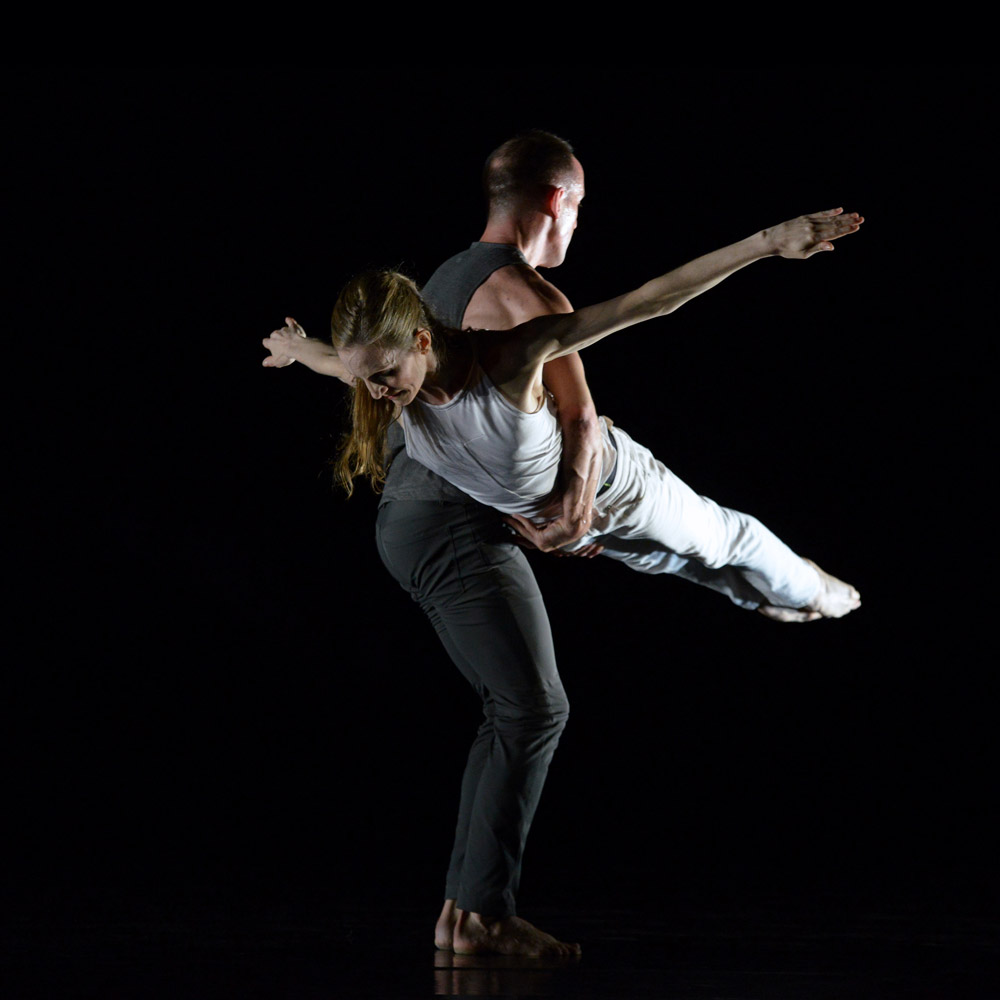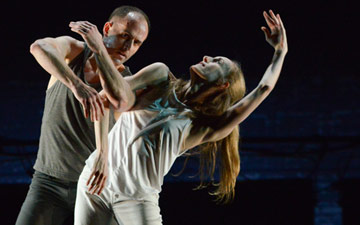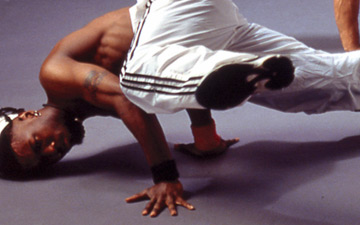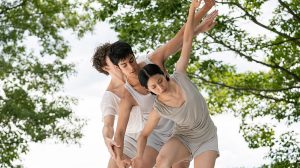
© Nir Arieli. (Click image for larger version)
Wendy Whelan & Brian Brooks
Some of a Thousand Words
★★★✰✰
New York, Joyce Theater
28 February 2017
www.wendywhelan.org
www.brianbrooksmovingcompany.com
www.joyce.org
Over two years after her retirement from New York City Ballet, Wendy Whelan remains a sight to behold. Like many of her peers, she continues to dance, just, in a different sphere. Whelan’s first independent foray into contemporary dance was in 2013, with Restless Creature, a Joyce co-production featuring four choreographers. Fitting then that her latest effort in contemporary, with former Restless Creature collaborator Brian Brooks, opens the Joyce’s spring season.
Separated into four amorphous movements, plus a version of their duet First Fall for its finale, Some of a Thousand Words features live accompaniment from the string quartet Brooklyn Rider. Using Jacob Cooper’s “Arches” for the first movement, Whelan and Brooks swing straight, rod-like arms to the minimalistic hum. There is a touch of Trisha Brown here in the pendulous, weighted limbs and the force with which they are tossed around, reminiscent of Glacial Decoy’s first section. While Brooks is working hard, it is difficult not to stare at Whelan the entire time, and admire her rigor, strength and beauty, her intelligence visible but not overbearing. One can’t help but think of Sylvie Guillem, who, while a very different dancer, was also known for her distinctive physique, and challenged herself continually in her post-ballet career, pushing boundaries in numerous contemporary collaborations.

© Nir Arieli. (Click image for larger version)
Chairs are brought onto the stage. Whelan stands on one and falls sideways onto Brooks, her body flat and straight as a board. The audience gasps, and the action repeats. They sit next to each other on the chairs, and engage in a tangle of arm movements that look like a couple trying to get comfortable on a transatlantic flight. They nearly levitate in Pilates-like poses on the chairs, their bodies horizontal and trembling slightly from the muscle contractions.
First Fall, a duet with Brooks which debuted as part of Restless Creature and is set to Philip Glass’s 3rd String Quartet, is the most dynamic section of the program. Despite her experimentations, Whelan is still at her best when she is most balletic, and choreographically, First Fall has plenty of ballet echoes.
From the outset, Whelan has some turned out steps, piques and countless arabesque penchées. She floats when Brooks partners her as she steps backwards, part jump part pique, a contemporary take on Giselle’s sauté arabesques with Albrecht. Perhaps subconsciously, Giselle shows up repeatedly.

© Nir Arieli. (Click image for larger version)
The signature theme of First Fall is just that, a fall. Whelan’s body crashes yet again onto Brooks, taking a similar shape to yoga’s sideways plank pose. Most, not all of the time, she retains the flat, board-like position after he catches her (or props her up), her arms stretched straight out, Christ-like, or up in a “v,” her body as rigid as a corpse. Brooks sends her into deep penchees, and carries her around in this immobile state. The frigidity mirrors Giselle, in this case of Albrecht rocking her completely still, horizontal body. Giselle’s spectre-like effect is created partially by her inert upper body, and Brooks’ choreography for Whelan leaves a similar impression. There is a section where Whelan walks across the stage on half-pointe, pitched forward at nearly 45 degrees, leaning onto Brooks’ crawling body, her arms stretched backwards, in an angelic pose.
Regardless of what are likely unintentional parallels to a ballet which was not in Whelan’s repertoire at NYCB, the stillness creates the same ghostly illusion, which is all the more effective given Whelan’s unique physique: angular yet willowy. Is Brooks leaning on this too much? Once a ballerina, always a light, other-worldly creature, even in the contemporary sphere? Or is it the muse herself? Wheeldon’s After the Rain, which was created on Whelan, has similar moments of stillness, yet it vibrates with a vital sensuality, and no one movement is overused. At City Ballet, from Nutcracker to Agon, Whelan was a vision of radiant strength and intelligence. She is no less that dancer now. First Fall has beautiful moments, but the memory that stays is a dance not of a first fall but a thousand falls, of a meditation on Whelan’s physicality alone, and she is far more than that.

















You must be logged in to post a comment.